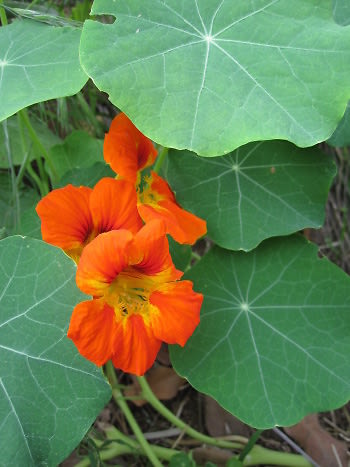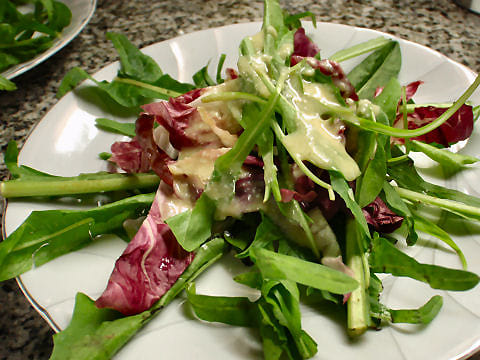 [photo via] This may come a shock to you since we're not exactly recognized for the pristine state of our natural surroundings, but apparently, in the nation's smoggiest city, where surfers are advised to stay out of the ocean due to hazardous levels of pollution, foraging safely is possible.
[photo via] This may come a shock to you since we're not exactly recognized for the pristine state of our natural surroundings, but apparently, in the nation's smoggiest city, where surfers are advised to stay out of the ocean due to hazardous levels of pollution, foraging safely is possible.
Forget what your mother told you about not being able to eat those plants you and your friends gathered from the yard when you were kids. You can actually go out and collect edible food from the wilds of L.A. If you're thinking you'd like to try your hand at some foraging, or just curious as to how one might do this, L.A. Weekly created a list of the 10 best items to be found in their natural state for the urban forager.
1. Bay leaves: these come from California laurel trees which can be found in coastal forests. Use them to as a spice to add some flavor to your cooking.
2. "Capers": these aren't true capers, they're nasturtium seeds, but when seasoned and brined correctly, can act as a replacement for the savory Mediterranean garnish. They come from the seed pods of an edible vine-like flower. [photo via]
3. 4. & 5. Fennel Seeds, Fronds and Pollen: these yellow-flowered plants can be found in our lovely hills and used to add a burst of flavor to your favorite dishes. If you try to gather the flavorful pollen, which can be used to season meats, you'll find it's pretty labor-intensive and start to understand why it's pricey.
6. Greens: baby greens are a great alternative to your classic iceberg lettuce for salads. They can also be found in the hills, dandelion greens being the most common and easy to identify. Freshly grown greens have a distinct taste from store-bought that's crisp and bitter, which is great from livening up a salad. [photo via]
7. Herbs: you probably don't notice but herbs are everywhere in this fair city, with rosemary, sage, and mint sprouting up along residential and even commercial streets, and they're totally edible!
8. Honey: DO NOT disturb an active beehive. But, if an unwelcome one forms close to your home or place of business, you can pay to have it relocated by professionals to a safe environment where they can care for it and collect its honey for you in exchange. So basically, you have your own personal beehive to supply you with honey. [photo via]
9. Ice Plant: a succulent native to South Africa that thrives in the dry Southern California heat. The plant's leaves and fruits, sour figs, are edible, with the latter used for jam and the former eaten raw, pickled or sauteed.
10. Snails: This might be difficult on your delicate sensibilities but the snails you see in your backyard or on your terrace or driveway are totally edible. Those snails are in fact descendants of the ones the French or Italians brought overseas in the 19th century with the intention of cooking and eating. Now, how about some homemade escargot? [photo via]






.jpg)
.jpg)



.jpg)
.jpg)
.jpg)




